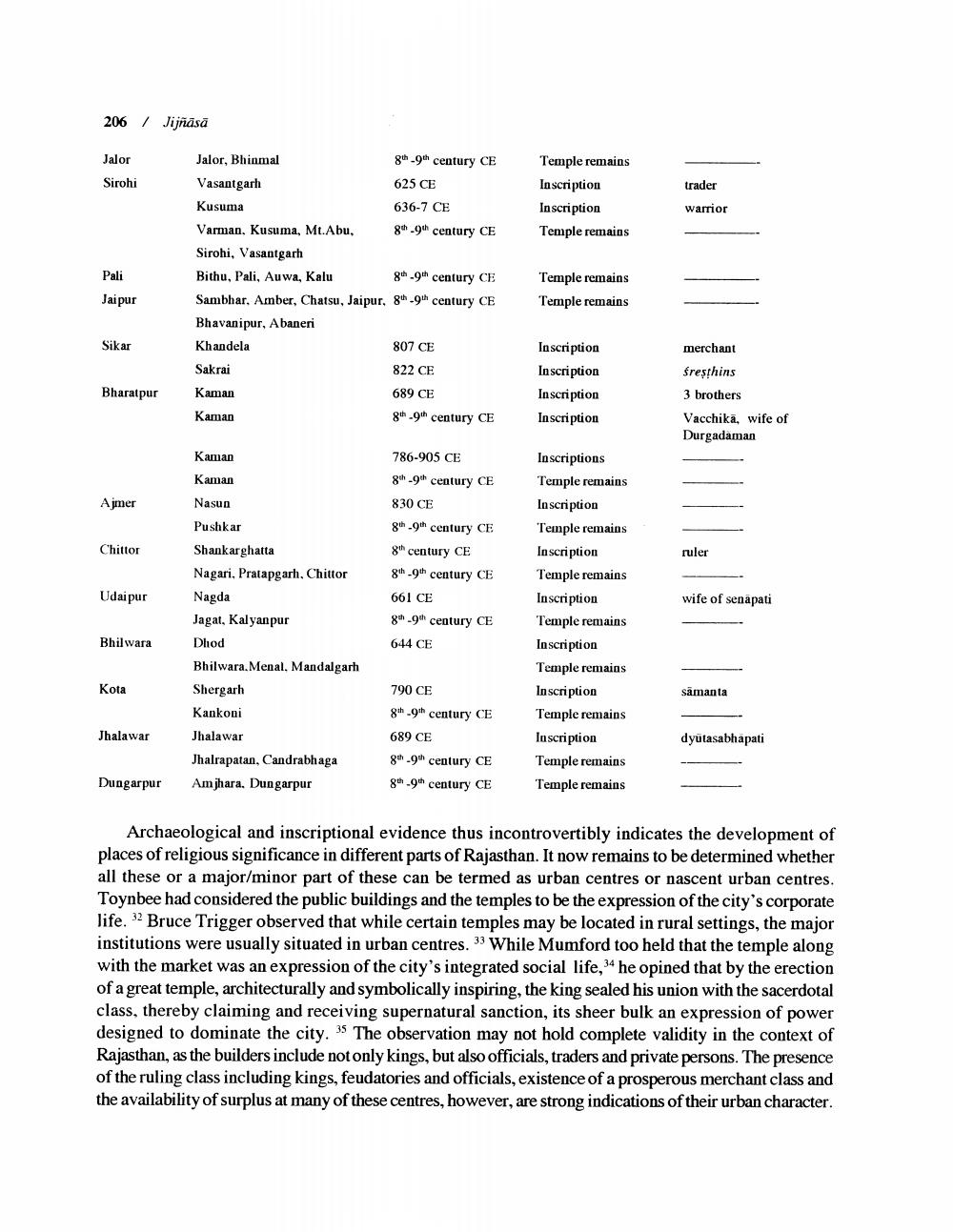________________
206
/
Jijñāsā
Jalor
Sirohi
trader
Temple remains Inscription Inscription Temple remains
warrior
Pali Jaipur
Jalor, Bhinmal
gth.9th century CE Vasantgarh
625 CE Kusuma
636-7 CE Varman, Kusuma, Mt.Abu, gh.9th century CE Sirohi, Vasantgarh Bithu, Pali, Auwa, Kalu guh.th century CE Sambhar. Amber, Chatsu, Jaipur, guh-guh century CE Bhavanipur, Abaneri Khandela
807 CE Sakrai
822 CE Kaman
689 CE Kaman
8-9h century CE
Temple remains Temple remains
Sikar
Inscription Inscription Inscription Inscription
Bharatpur
merchant Śresphins 3 brothers Vacchikā, wife of Durgadaman
Kaman
Kaman
Ajmer
Nasun
786-905 CE gih-9th century CE 830 CE gh.9th century CE 8th century CE 8th 9th century CE 661 CE 8.9th century CE
Chittor
ruler
Udaipur
wife of senapati
Inscriptions Temple remains Inscription Temple remains Inscription Temple remains Inscription Temple remains Inscription Temple remains Inscription Temple remains Inscription Temple remains Temple remains
Bhilwara
Pushkar Shankarghatta Nagari, Pratapgarh, Chittor Nagda Jagat, Kalyanpur Dhod Bhilwara. Menal, Mandalgarh Shergarh Kankoni Jhalawar Jhalrapatan, Candrabhaga Amjhara. Dungarpur
644 CE
Kota
samanta
Jhalawar
790 CE gth_9h century CE 689 CE goh.9th century CE gh-9 century CE
dyutasabhapati
Dungarpur
Archaeological and inscriptional evidence thus incontrovertibly indicates the development of places of religious significance in different parts of Rajasthan. It now remains to be determined whether all these or a major/minor part of these can be termed as urban centres or nascent urban centres. Toynbee had considered the public buildings and the temples to be the expression of the city's corporate life. "2 Bruce Trigger observed that while certain temples may be located in rural settings, the major institutions were usually situated in urban centres. 33 While Mumford too held that the temple along with the market was an expression of the city's integrated social life,34 he opined that by the erection of a great temple, architecturally and symbolically inspiring, the king sealed his union with the sacerdotal class, thereby claiming and receiving supernatural sanction, its sheer bulk an expression of power designed to dominate the city. 35 The observation may not hold complete validity in the context of Rajasthan, as the builders include not only kings, but also officials, traders and private persons. The presence of the ruling class including kings, feudatories and officials, existence of a prosperous merchant class and the availability of surplus at many of these centres, however, are strong indications of their urban character.




